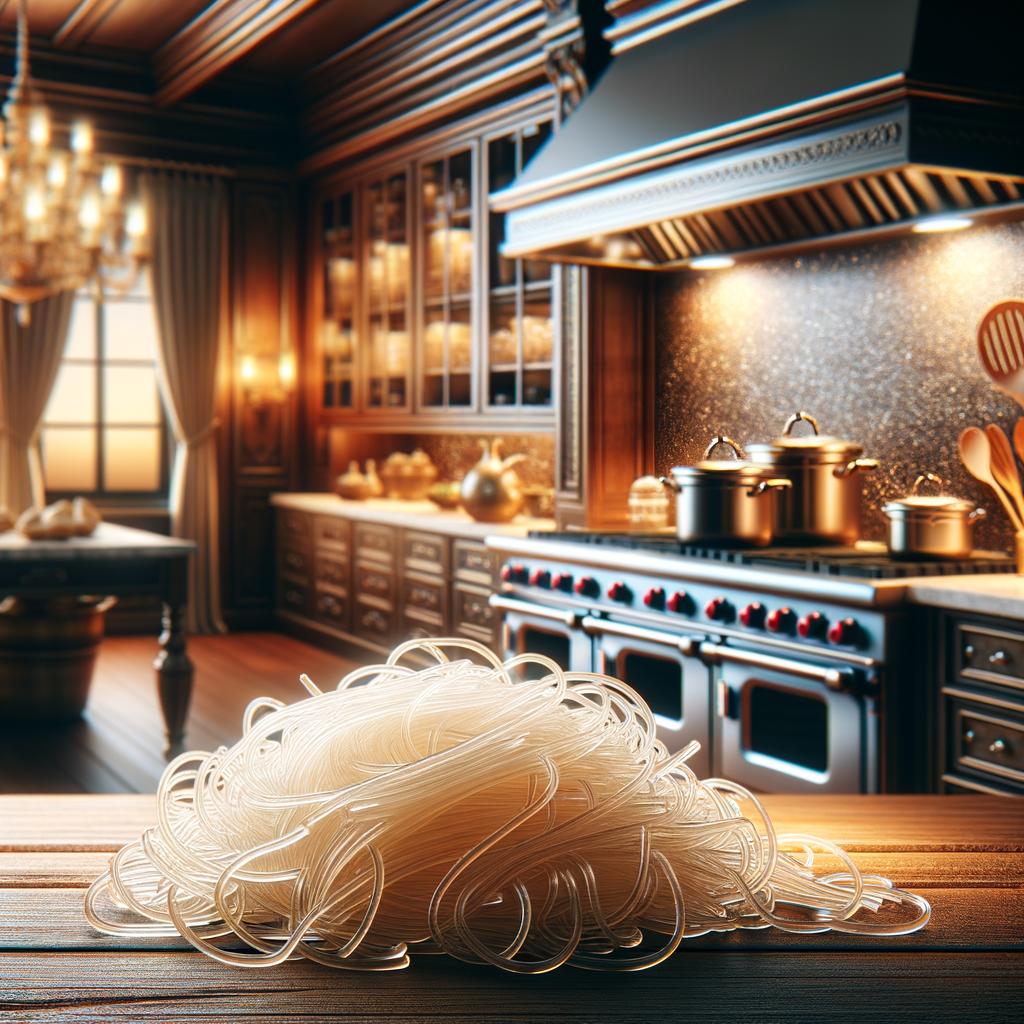Glass Noodles

Description
Glass noodles, also known as cellophane noodles, are an exquisite ingredient that brings an ethereal touch to any dish. They are translucent, thin, and long, resembling strands of glass, hence their name. When dry, they are brittle and delicate, but when cooked, they transform into a soft, slippery, and chewy delight. Their flavor profile is subtle, making them an excellent canvas for soaking up the flavors of the dishes they are incorporated into. What sets glass noodles apart from other noodles is their unique texture and their transparent appearance when cooked, making them a visually appealing addition to meals.
Primary Uses
Glass noodles are a versatile ingredient used extensively in various Asian cuisines, including Chinese, Korean, Thai, and Vietnamese. They are often the star of stir-fry dishes, salads, spring rolls, and soups. In Korean cuisine, they are a key component of Japchae, a festive dish of stir-fried glass noodles with vegetables and meat. In Thailand, they feature in Yum Woon Sen, a spicy and tangy salad. Beyond their culinary uses, glass noodles have cultural significance in many Asian cultures, symbolizing long life and prosperity, and are often served at celebrations and special occasions.
History
The history of glass noodles is as captivating as their shimmering appearance. Originating in China over a thousand years ago during the Tang Dynasty, they were initially a luxury item enjoyed only by the nobility. Over time, they became more accessible and integrated into the daily meals of common people. The noodles' popularity spread across Asia, with each culture adding its unique spin to dishes featuring this ingredient. There are many folklores associated with glass noodles, including the belief in some cultures that eating them can lead to a long and prosperous life due to their long, unbroken shape.
Nutritional Information
Despite their delicate appearance, glass noodles are a nutritional powerhouse. They are primarily made from starch, such as mung bean, potato, or cassava, and water, making them a great source of energy. They are low in fat, sodium, and cholesterol, making them a healthy choice for those watching their intake. Glass noodles are also gluten-free, providing a great alternative for those with gluten sensitivities. However, they are higher in carbohydrates and lower in fiber and protein compared to whole grain noodles. As with all foods, they are best enjoyed in moderation as part of a balanced diet.

